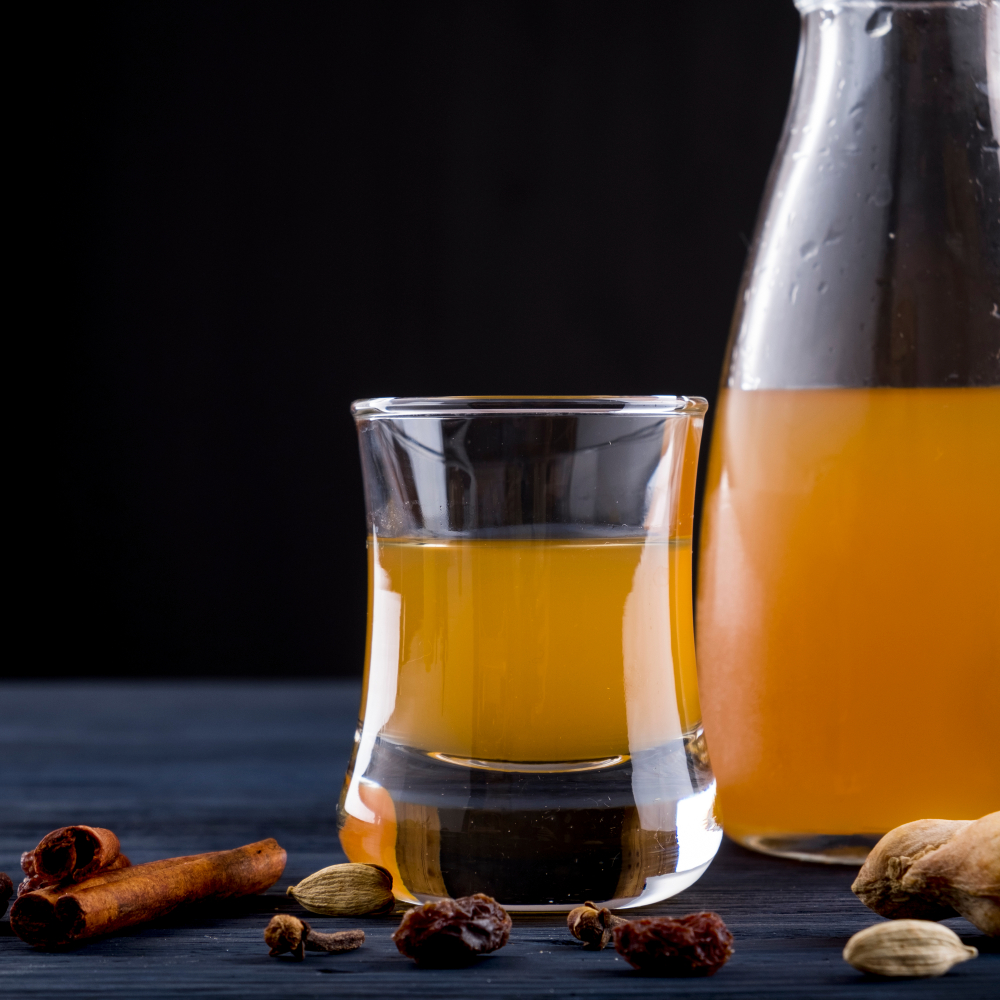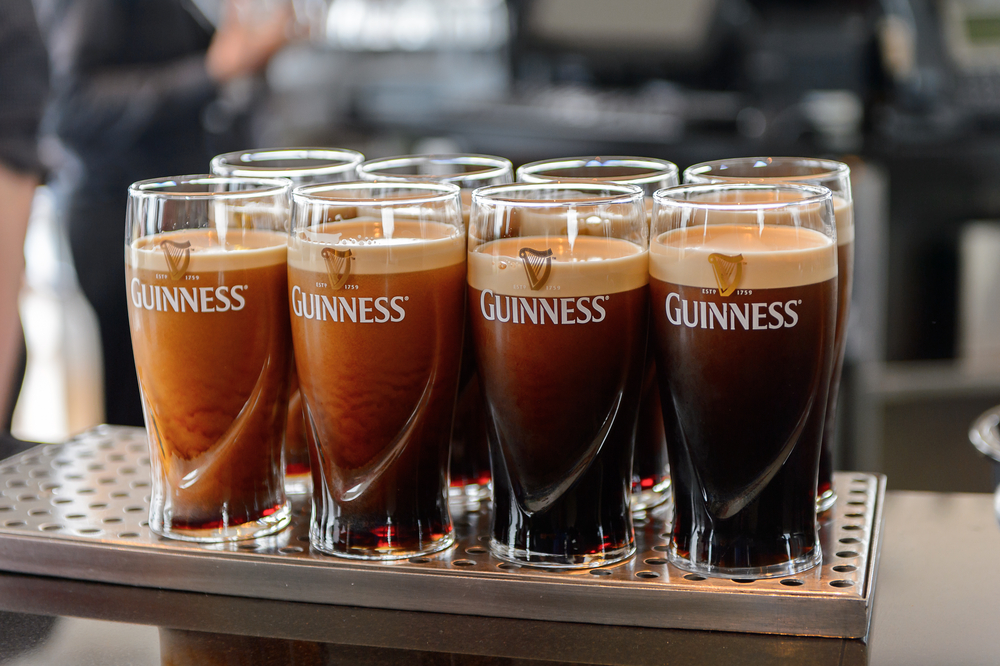Mead, also known as honey wine, is an alcoholic beverage made by fermenting honey and water. It has been around for centuries and is often associated with medieval times.
But what does mead taste like? The answer is not straightforward, as it can vary depending on the type of mead, the ingredients used, and the brewing process.
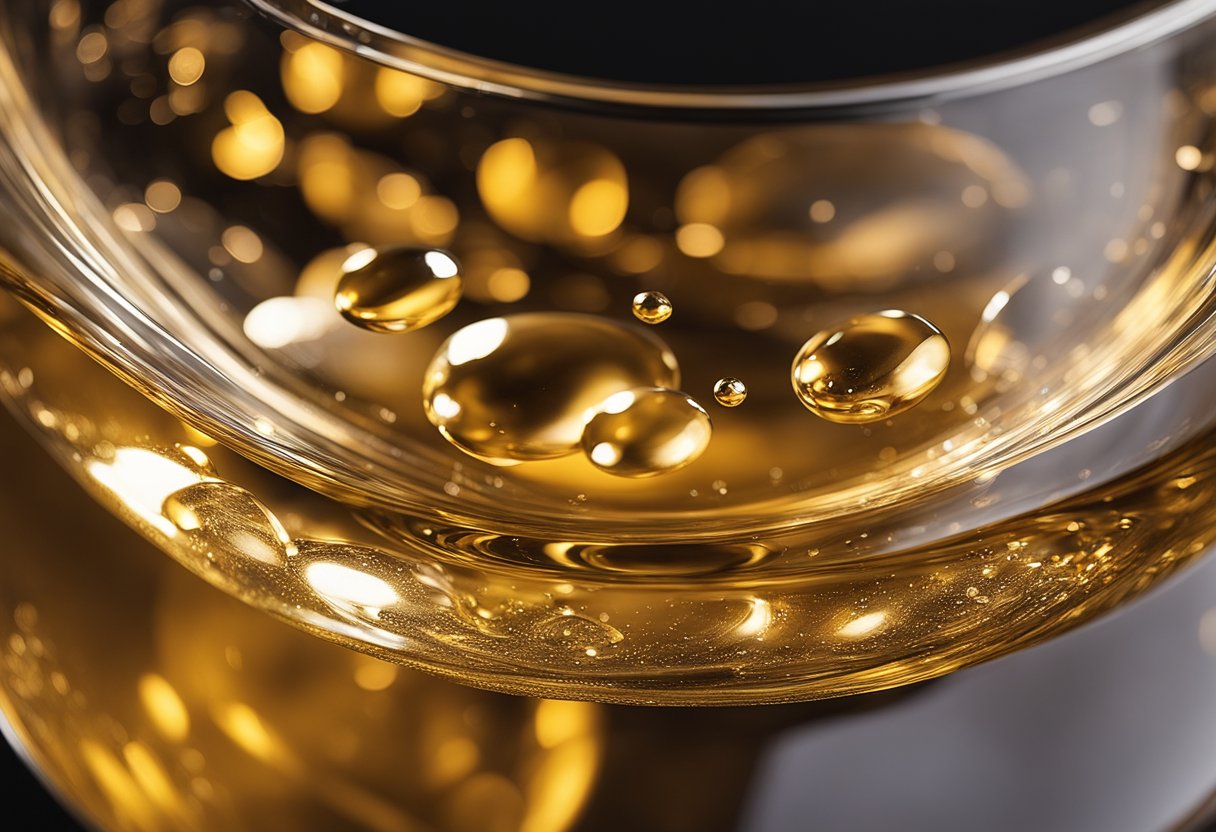
Generally, mead has a sweet, light taste that is similar to beer or wine. However, it can also have a range of other flavors, such as fruity, floral, spicy, or even sour.
Mead can be either still (uncarbonated) or carbonated like champagne when it’s bottled with yeast-produced carbon dioxide dissolved in the drink.
The taste of mead can also vary depending on the aging process, with some meads becoming richer and more complex over time.
Key Takeaways
- Mead is an alcoholic beverage made by fermenting honey and water, and it has a sweet, light taste similar to beer or wine.
- The taste of mead can vary depending on the type of mead, the ingredients used, and the brewing process, and it can have a range of flavors such as fruity, floral, spicy, or even sour.
- The aging process can also affect the taste of mead, with some meads becoming richer and more complex over time.
History of Mead
Mead is one of the oldest alcoholic beverages in the world, with a history that dates back thousands of years. It is believed that mead was first made in Africa, where honey was abundant.
The drink then spread to Europe and Asia, where it became a popular drink among the Greeks and Romans.
The Greeks called mead “ambrosia,” which means “food of the gods.” They believed that it had mystical powers and could provide longevity and strength.
The Romans, on the other hand, called it “mulsum,” which was a mixture of mead and wine. They drank it during their feasts and celebrations.
In medieval Europe, mead was a popular drink among the nobility. It was often served during banquets and weddings. Mead was also used as a medicinal drink, as it was believed to have healing properties.
During the Renaissance, mead fell out of favor as other alcoholic beverages such as wine and beer became more popular.
However, mead has recently experienced a resurgence in popularity, with many craft breweries and meaderies producing their own unique blends.
Overall, the history of mead is rich and varied, with its origins dating back to ancient times. Its popularity has waxed and waned over the centuries, but it remains a beloved drink among many cultures to this day.
Ingredients of Mead
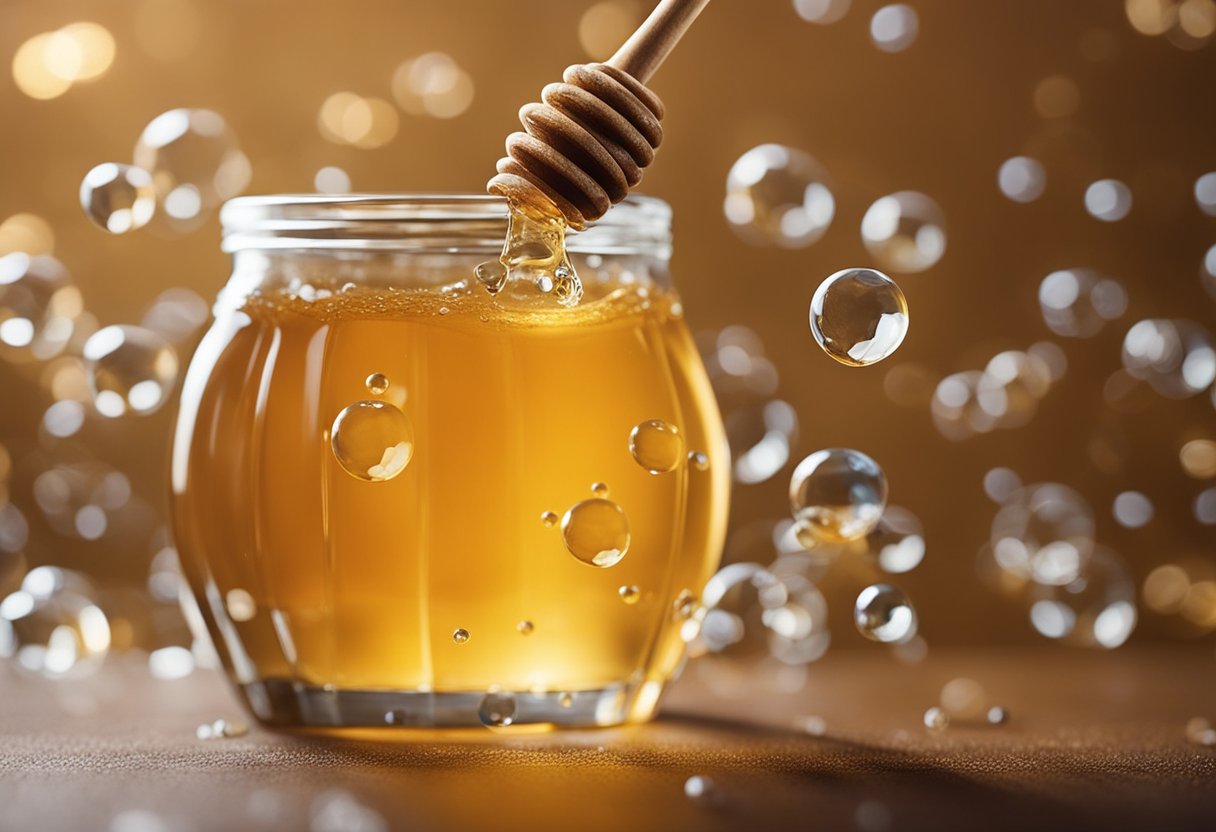
As a mead enthusiast, I know that mead is made from a combination of ingredients. The ingredients used in making mead differ depending on the type of mead being made.
In this section, I will discuss the primary, additional, and special ingredients that are commonly used in making mead.
Primary Ingredients
The primary ingredients in mead are honey, water, and yeast. Honey is the main ingredient in mead, and it is what gives mead its distinct flavor. The type of honey used in making mead can affect the taste of the final product.
Water is used to dilute the honey and create the right balance of sweetness and alcohol content. Yeast is added to the mixture to ferment the honey and convert it into alcohol.
Additional Ingredients
Additional ingredients that are commonly used in making mead include spices, fruit, sugar, and herbs. Spices such as cinnamon, nutmeg, and cloves can be added to mead to give it a warm and spicy flavor.
Fruit such as apples, berries, and oranges can be used to add a fruity flavor to mead. Sugar can be added to increase the alcohol content of mead, while herbs such as chamomile and lavender can be used to add a floral flavor.
Special Ingredients
Special ingredients can also be used in making mead. Gin, nectar, and flowers are examples of special ingredients that can be added to mead to create a unique flavor.
Gin can be added to mead to give it a botanical flavor, while nectar can be added to give it a sweet and fruity flavor. Flowers such as rose petals and hibiscus can be added to mead to give it a floral flavor.
In conclusion, mead is made from a combination of ingredients, and the type of mead being made determines the ingredients used.
Honey, water, and yeast are the primary ingredients used in making mead, while additional ingredients such as spices, fruit, sugar, and herbs can be added to create a unique flavor.
Special ingredients such as gin, nectar, and flowers can also be added to mead to create a unique and special flavor.
Types of Mead
Mead comes in a variety of types, each with its unique taste and characteristics. Here are some of the most popular types of mead:
Traditional Mead
Traditional mead is made from honey, water, and yeast, and it is the most basic type of mead. It has a sweet taste and can be dry or semi-sweet, depending on the fermentation process.
Traditional mead is a great starting point for those who are new to mead.
Metheglin
Metheglin is a type of mead that is spiced with herbs or spices. The spices used can vary, but some common ones include cinnamon, nutmeg, and cloves.
Metheglin has a spicy taste and can be sweet or dry, depending on the amount of honey used.
Melomel
Melomel is a type of mead that is made with fruit juice or whole fruit. The fruit used can vary, but some popular choices include berries, apples, and oranges.
Melomel has a fruity taste and can be sweet or dry, depending on the amount of honey used.
Sack Mead
Sack mead is a type of mead that is made with a higher concentration of honey than traditional mead. This results in a sweeter and more alcoholic mead.
Sack mead is often aged for several years, which gives it a rich, complex flavor.
Bochet
Bochet is a type of mead that is made by caramelizing the honey before fermentation. This gives the mead a rich, smoky flavor. Bochet can be sweet or dry, depending on the amount of honey used.
Braggot
Braggot is a type of mead that is made with malted grains, such as barley or wheat. This gives the mead a beer-like taste and can result in a sweet or dry mead, depending on the amount of honey used.
Dry Mead
Dry mead is a type of mead that has little to no residual sweetness. This is achieved by fermenting the mead until all of the honey has been converted to alcohol. Dry mead has a crisp, clean taste and is often compared to white wine.
Sweet Mead
Sweet mead is a type of mead that has a higher residual sweetness than traditional mead. This is achieved by adding more honey to the fermentation process. Sweet mead has a rich, full-bodied taste and is often compared to dessert wine.
Sparkling
Sparkling mead is a type of mead that is carbonated, either naturally or artificially. This gives the mead a light, effervescent taste and can make it more refreshing.
Still
Still mead is a type of mead that is not carbonated. This gives the mead a smoother, more mellow taste and can make it more suitable for sipping.
Mead Making Process
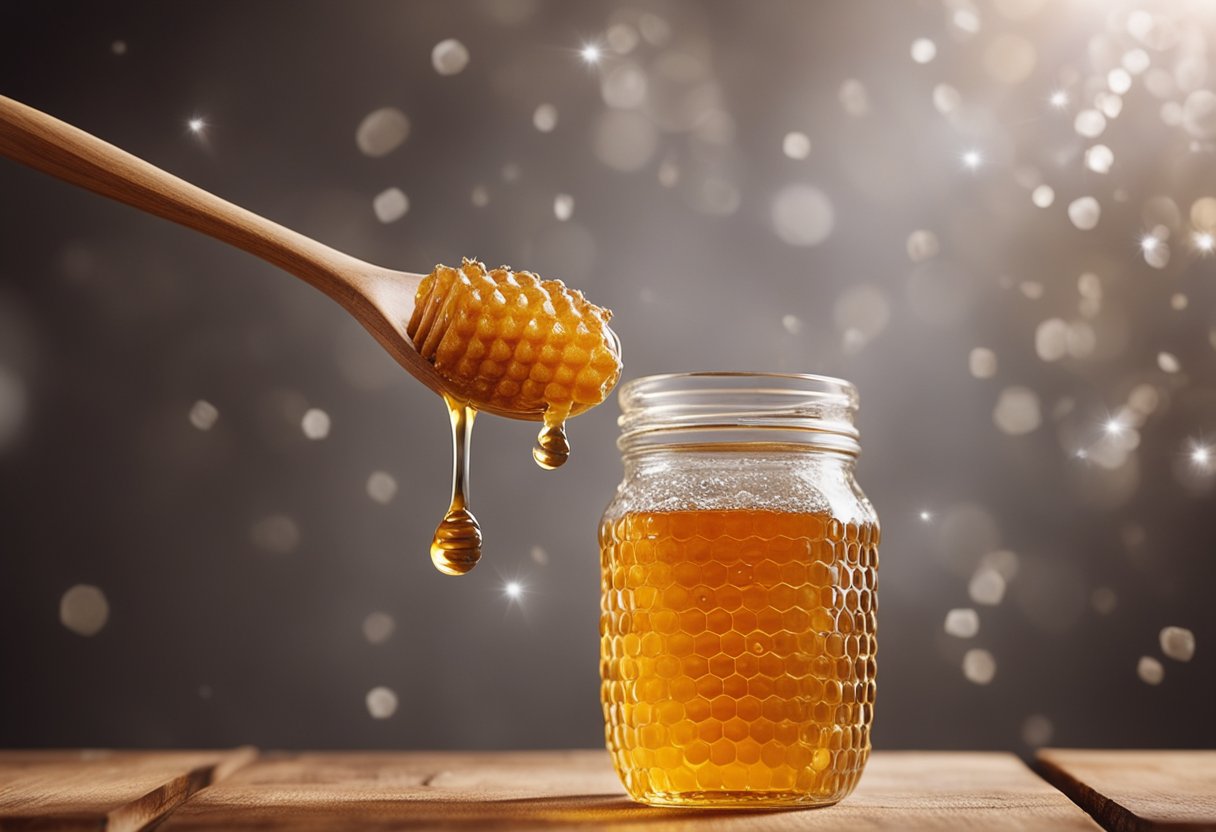
Mead is an alcoholic beverage made from fermented honey and water. The process of making mead is similar to that of making wine, but with a few key differences.
To make mead, you first need to choose a recipe. There are countless recipes available online and in books, so you can choose one that suits your taste preferences. Some recipes use fruit, spices, or other flavorings to create a unique taste.
Once you have your recipe, you will need to gather your ingredients. The main ingredient is honey, which should be of high quality and free from any additives.
You will also need water, yeast, and any other ingredients specified in your recipe.
To start the fermentation process, you will need to mix the honey and water together in a large pot or container. This mixture is called the “must.”
The must should be heated to a specific temperature, usually around 160°F, to pasteurize the honey and water and kill any bacteria or wild yeast that may be present.
Once the must has cooled to room temperature, you can add the yeast. The yeast will begin to ferment the sugars in the honey, producing alcohol and carbon dioxide.
The fermentation process can take anywhere from a few days to several months, depending on the recipe and the desired alcohol content.
During the fermentation process, it is important to monitor the mead and make sure that the temperature and other conditions are optimal for the yeast.
You may need to adjust the temperature or add nutrients to the must to ensure that the yeast is healthy and active.
Once the fermentation process is complete, you can bottle the mead and let it age for several months to develop its flavor. Some meads may be ready to drink immediately, while others may benefit from aging for several years.
Overall, the process of making mead is relatively simple, but it does require some patience and attention to detail.
With the right recipe and ingredients, you can create a delicious and unique beverage that is sure to impress your friends and family.
Taste Profile
As a mead enthusiast, I can tell you that mead has a unique taste profile that sets it apart from other alcoholic beverages. In this section, I will discuss the flavor, mouthfeel, and aftertaste of mead.
Flavor
Mead has a flavor profile that varies depending on the ingredients used in its production. The most common flavor profiles include fruity, spiced, floral, earthy, and chocolate. Some meads have a mild flavor, while others are more robust.
The fruity flavor of mead comes from the honey used in its production. Different types of honey have different flavors, so the flavor of mead can vary depending on the type of honey used.
Spiced meads often include ingredients such as cinnamon, vanilla, or cloves, which give them a warm, spicy flavor. Floral meads use flowers such as lavender or chamomile to give them a delicate, floral flavor.
Earthy meads often use herbs such as rosemary or thyme to give them an earthy, herbal flavor. Chocolate meads use cocoa nibs to give them a rich, chocolatey flavor.
Mouthfeel
Mead has a smooth, full-bodied texture that is similar to wine. The mouthfeel of mead can vary depending on the type of mead. Some meads are light and refreshing, while others are heavy and rich.
The texture of mead is influenced by the amount of honey used in its production. Meads with a higher honey content tend to be heavier and richer, while meads with a lower honey content tend to be lighter and more refreshing.
Aftertaste
The aftertaste of mead is often described as sweet and lingering. The sweetness comes from the honey used in its production, and the lingering flavor is a result of the complex flavor profile of mead.
The aftertaste of mead can vary depending on the type of mead. Some meads have a dry finish, while others have a sweet finish. The balance between sweetness and dryness is an important aspect of the aftertaste of mead.
Overall, mead has a unique taste profile that is influenced by the ingredients used in its production. The flavor, mouthfeel, and aftertaste of mead make it a complex and enjoyable beverage for any occasion.
Appearance and Aroma

As a mead enthusiast, I can confidently say that the appearance and aroma of mead are just as important as its taste.
The color of mead can range from light yellow to dark amber, depending on the type of honey used and the length of fermentation. Some meads are even pink or red if fruit or spices are added during the brewing process.
When it comes to the appearance of mead, clarity is a significant factor. Clarity can vary depending on the type of mead and the brewing process.
Some meads are crystal clear, while others have a slight haze or sediment at the bottom of the bottle.
The aroma of mead is often described as floral and sweet, with a hint of honey. The scent can be subtle or strong, depending on the type of mead. Some meads have a more complex aroma, with notes of fruit, spices, or even oak.
Bubbles are not a significant factor in mead, as it is not carbonated like beer or champagne. However, some meads may have a slight effervescence, which can add a pleasant texture to the drinking experience.
Overall, the appearance and aroma of mead can provide valuable clues about its taste. A clear, golden mead with a subtle honey aroma is likely to be light and delicate, while a darker, more complex mead with a strong floral scent may have a bolder, richer flavor.
Pairing Mead with Food
When it comes to pairing mead with food, there are a few things to keep in mind. Mead is a versatile drink that can pair well with a variety of dishes, from sweet desserts to savory meats and cheeses.
One thing to consider when pairing mead with food is the sweetness level of the mead. Sweeter meads can pair well with desserts, while drier meads can complement savory dishes.
For example, a sweet mead like a melomel, which is made with fruit, can pair well with a fruit tart or cheesecake.
On the other hand, a drier mead like a traditional mead can pair well with grilled meats or a cheese plate.
When it comes to cheese, there are a few types that pair particularly well with mead. Aged cheeses like cheddar or gouda can complement the earthy flavors of mead, while blue cheeses like Roquefort or Stilton can pair well with sweeter meads.
Soft, creamy cheeses like brie or camembert can also be a good match for mead.
Overall, when pairing mead with food, it’s important to consider the flavors and sweetness levels of both the mead and the dish in order to create a harmonious pairing.
With a little experimentation, you’re sure to find the perfect combination of mead and food to suit your taste.
Storing and Serving Mead

As a mead enthusiast, I know how important it is to store and serve mead correctly to fully enjoy its unique taste and flavor. Here are some tips on how to do it right:
Storing Mead
Mead should be stored in a cool, dark place away from direct sunlight and heat sources. A wine cellar is the perfect place to store mead, but a pantry or cupboard will do just fine.
It is important to avoid spots that might give sudden shocks or vibrations, such as near a refrigerator.
Unopened bottles of mead can last for years if stored correctly. However, once opened, mead should be consumed within a reasonable amount of time to prevent the flavor from deteriorating.
Serving Mead
Mead should be served at the right temperature to fully enjoy its unique flavor. Most meads taste best when served at room temperature, but some carbonated meads taste better when served chilled.
It is important to check the label or ask the producer for specific serving instructions.
When serving mead, it is important to use the right glassware. A wine glass or a tulip glass is ideal for sipping mead, as it allows the aroma to fully develop and enhances the flavor.
It is also important to pour mead correctly to prevent sediment from getting into the glass. Hold the bottle at a 45-degree angle and pour slowly, leaving a small amount of mead in the bottle to prevent sediment from getting into the glass.
By storing and serving mead correctly, you can fully enjoy its unique taste and flavor.
Commercial Meaderies
As mead gains popularity, more and more commercial meaderies are popping up. These meaderies produce mead on a larger scale and typically distribute their products to local stores and bars.
One advantage of commercial meaderies is their ability to experiment with different ingredients and flavors. They often use high-quality honey and other ingredients to create unique and delicious meads.
Additionally, commercial meaderies are able to produce a consistent product, ensuring that customers receive the same great taste every time they purchase a bottle of mead.
However, some commercial meaderies may use sulfites or other additives to preserve their mead and extend its shelf life. This can be a turn-off for some mead enthusiasts who prefer their mead to be all-natural.
It’s important to do your research and check the label before purchasing mead from a commercial meadery if you have concerns about additives.
Resources such as online reviews and mead festivals can help you discover and explore different commercial meaderies and their products. Don’t be afraid to try new meads from different meaderies to find your favorite flavor.
Frequently Asked Questions
How does mead differ from beer in taste?
Mead is made from honey, while beer is made from malted grains. As a result, mead has a distinct sweetness that is absent in beer.
Mead can also have a range of flavors depending on the type of honey used, such as fruity or spicy notes.
What is the typical sweetness level of mead?
The sweetness level of mead can vary depending on the type of mead. Some meads are dry and have a low sweetness level, while others can be very sweet. Mead can also have a range of sweetness levels in between these two extremes.
What is the aroma of mead?
The aroma of mead can vary depending on the type of mead. Some meads have a floral aroma with hints of citrus and vanilla, while others can have a more earthy or spicy aroma.
The aroma of mead is often influenced by the type of honey used in the brewing process.
Where can I purchase mead?
Mead can be purchased at specialty liquor stores, meaderies, and some craft beer stores. It can also be purchased online from various retailers.
What is the process for making mead?
The process for making mead involves mixing honey with water and yeast to create a fermented beverage. The mixture is then left to ferment for several weeks or months, depending on the desired flavor and alcohol content.
Additional ingredients, such as fruit or spices, can also be added to create different flavors of mead.
What is the alcohol content of mead?
The alcohol content of mead can vary depending on the type of mead and the fermentation process used. On average, mead has an alcohol content of around 8-14%, but it can range from as low as 3% to as high as 20%.



